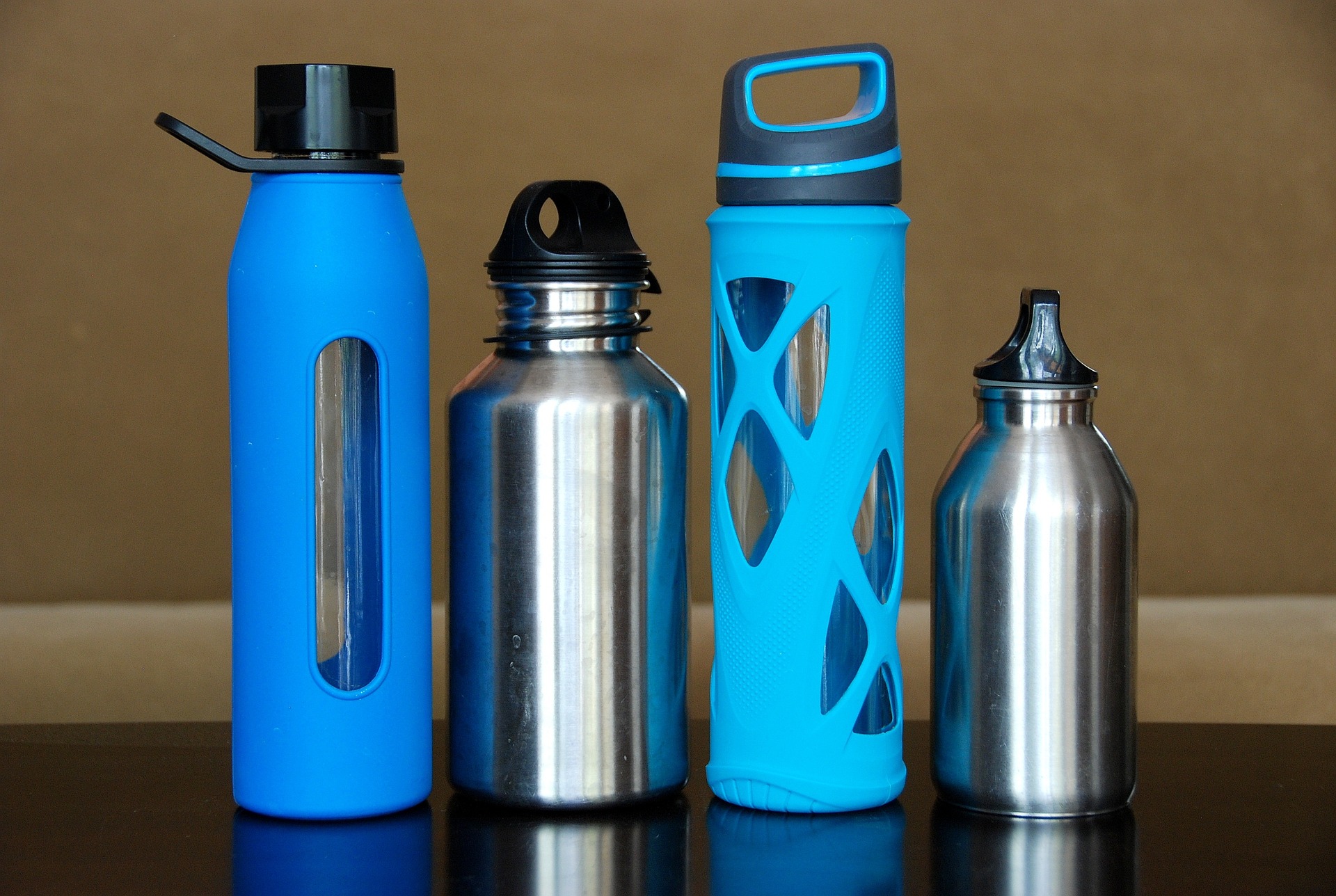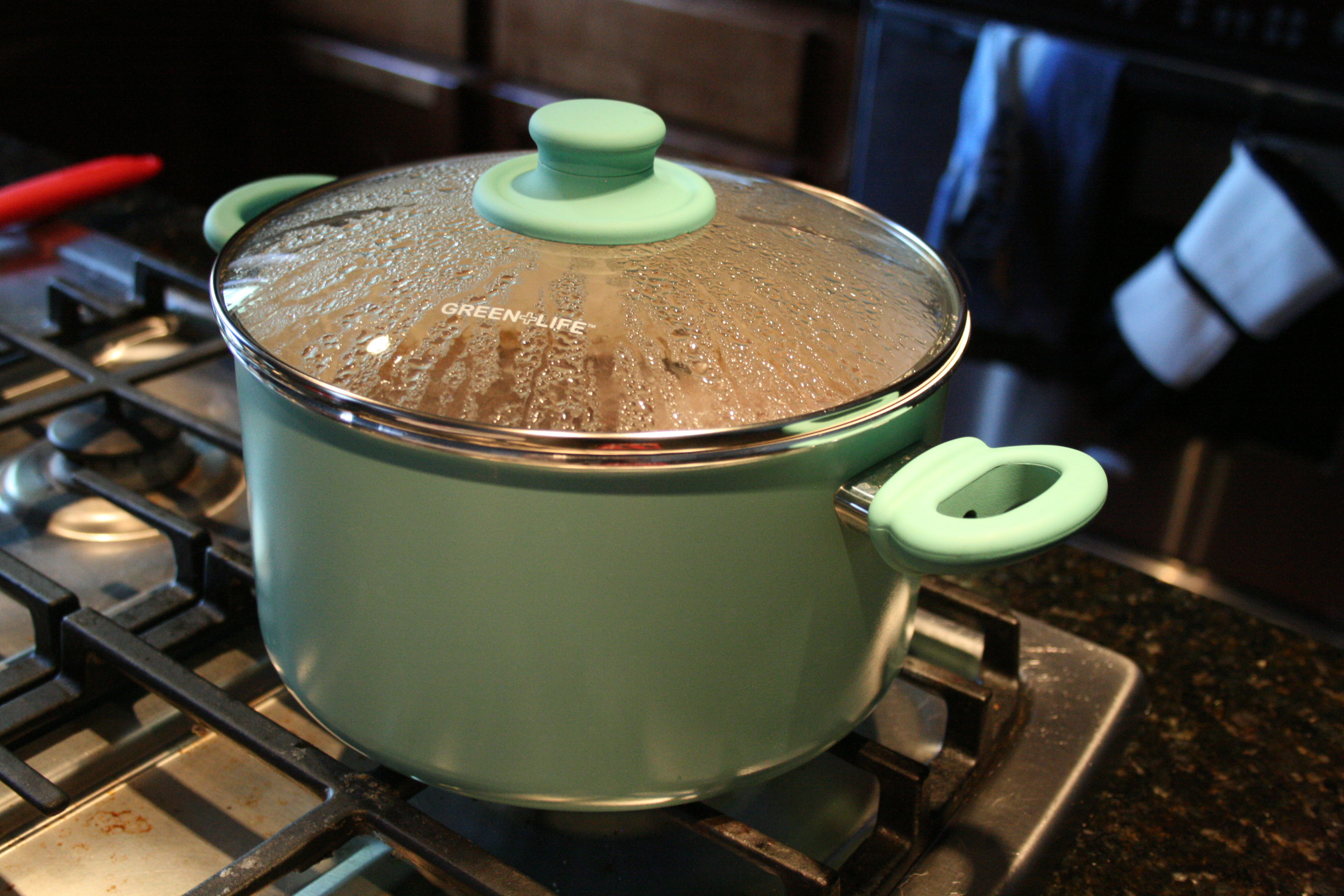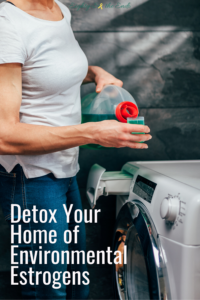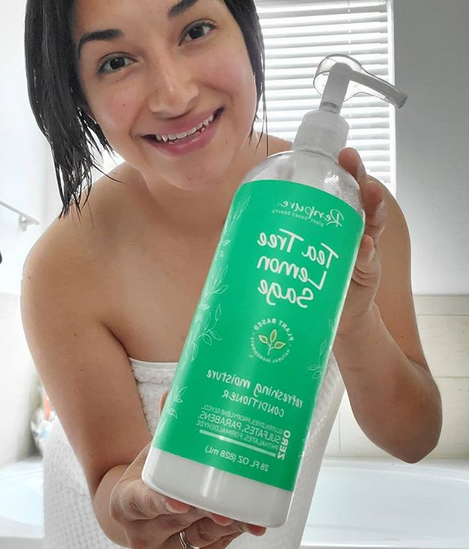As I close out this 5-part estrogen dominance series, I want to leave you with tips to help decrease the amount of estrogen in your environment. Ultimately, I want to help you detox your home of environmental estrogens, because I know that you can’t always control the rest of your surroundings.
In part three, I discussed how estrogen can be found in our foods, especially in the foods that make up most of the American Diet. However, many endocrine hormone disruptors can be in the everyday products that you use.
Environmental Estrogens
Today I will focus on xenoestrogens, or environmental estrogens. Xenoestrogens fall under the larger umbrella of endocrine disrupting chemicals, which basically means they disrupt normal hormonal processes.
Essentially, decreasing your exposure to environmental estrogens can play a role in managing your endometriosis. And although it is nearly impossible to eliminate exposure to all environmental toxins, conscientious endo warriors can still find ways to avoid these chemicals that can wreak havoc on the body.
So, without further ado, here are some practical and tangible tips to decrease the amount of xenoestrogens in your immediate environment.

Your Home Needs A Detox!
1. Clean out your kitchen.
Go BPA-Free
It is very likely that you have heard this acronym being thrown around in recent articles, studies, and marketing advertisements, for good reason too! BPA, or Bisphenol-A, is a toxic man-made compound used in plastics and epoxy resins (2). Unfortunately, BPA is all around us, even in household dust (2). But most notably, it can be found in the lining of canned foods and plastic food ware.
The chemical structure of BPA is very similar to that of estradiol, a hormone produced by the ovaries. It’s similar structure allows it to attach to cellular targets, making it a known xenoestrogen and endocrine disruptor (2). This, in turn, can have long term effects on fertility and can increase the chances of endometriosis (2).
So, ditch the plastic-ware and opt for canned goods that have a clear NON-BPA LINING label.

As a side note, you may be surprised to know that BPA is used in receipt paper (1). For this reason, if you have the option to receive your receipt by email, then I encourage you to do so. And if you feel that your purchase does not require a receipt, then it’s okay to decline it.
Get rid of PFC’s
Perfluorinated Chemicals, or PFC’s, are endocrine disrupting chemicals that are most frequently used to increase water resistance and decrease the chances of sticking or staining. They are usually found on cookware, water bottles, on furniture/mattresses, or in beauty products.
PFC’s have been studied extensively for their effect on human health. At this point, there are animal studies that show PFC’s can poorly affect the endocrine system, the immune system, and vital body organs like the pancreas and liver (4). They also have been shown to produce delays in development when animals were exposed in the womb (4).
For these reasons, it may be best to replace your cookware with safer alternatives, like ceramic, stainless steel, or cast iron.

2. Avoid Using Bleach.
Dioxins are by-products made from the manufacturing of chlorine bleach, paper pulp and pesticides, which eventually contribute to environmental pollution.
 Since there is evidence suggesting that dioxins are associated with increased chances of endometriosis (3), it may be best for you to avoid using bleach at all.
Since there is evidence suggesting that dioxins are associated with increased chances of endometriosis (3), it may be best for you to avoid using bleach at all.
If you want to keep your white linens white, then try using ½ cup of baking soda and ½-1 cup white vinegar as your cleaning agents, and wash in hot water. It’s a green alternative that works!
3. Ditch Your Toxic Beauty and Grooming Regimen.
Most body care products, like toothpaste, deodorants, and lotions, can contain things like fragrance, aluminum, sulfates, PFC’s, Parabens, and Perchlorate. All of these are endocrine disruptors, meaning they disrupt our normal hormone functions.
So, the next time you go to buy a replacement for your grooming and beauty products, look for non-toxic alternatives. For deodorant, look for a product without aluminum. For toothpaste, look for a product without sodium lauryl sulfate (SLS). When choosing a body lotion, consider using coconut oil.
Finding an alternative to your favorite products is doable, but you must be willing to do your research in finding the product that is right for you and your budget.

Final Notes on Environmental Estrogens
As you can see, xenoestrogens are in abundance all around us, so it’s almost impossible to avoid them. What’s important is that you remember that your goal is to minimize exposure to environmental estrogens. By doing this, you might decrease your chances of exacerbating the development of endometriosis.
This doesn’t mean you have to toss everything out at once. I know that replacing everything can be expensive. But when purchasing items for your kitchen, body, and home, take note of their source and manufacturing process. And be mindful of the ingredients that are being used. Ultimately, you can significantly impact your long-term health just by becoming mindful of environmental estrogens and the products you introduce to your body.
If you are interested in other ways to decrease your estrogen burden, then check out the previous posts that were adapted from my series written for The American End of Endo Project:

- Cohn, S.M., Cohn, P., & Zalace, A. (Producers), & Cohn, S.M. (Director). (2016). Endo What? [Motion picture]. USA: Endo What LLC.
- Mileva, G., Baker, S. L., Konkle, A. T., & Bielajew, C. (2014). Bisphenol-A: Epigenetic Reprogramming and Effects on Reproduction and Behavior. International Journal of Environmental Research and Public Health, 11(7), 7537-7561. https://doi.org/10.3390/ijerph110707537
- DeVito, M. J., & Schecter, A. (2002). Exposure assessment to dioxins from the use of tampons and diapers. Environmental health perspectives, 110(1), 23-8. doi: 10.1289/ehp.0211023
- NIH (2016). Perfluorinated Chemicals [PDF]. Retrieved from https://www.niehs.nih.gov/health/materials/perflourinated_chemicals_508.pdf



